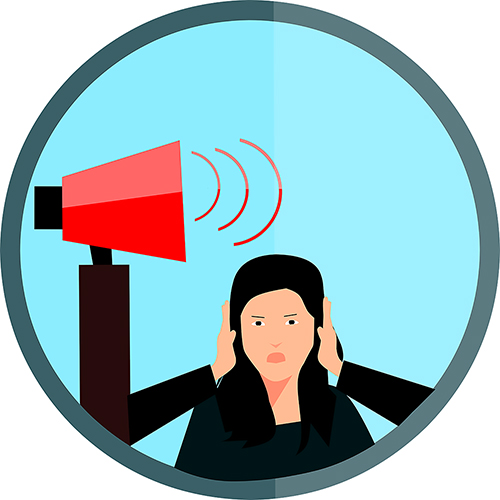Time to Buy Some Earplugs! Noise Pollution in Korea
Written by Cami Ismanova.
Have you ever paid attention to the sounds that occur around you? Your neighbor playing alternative rock with open windows, bikes hastening through the maze of gray streets, or maybe cats having an unbearably good time in spring. All right, those were unpleasant ones. How about a crackling fire in the cold autumn evening, the silence when children are having a nap, or cash flying out of an ATM? Satisfying, are they not? The world around us is filled with a plethora sounds. Some of them are calming and pleasant; others are ear-splitting.
To determine a sound level, acousticians and audiologists measure sounds by using a logarithmic unit called a decibel (dB). Decibels are usually used to measure the loudness of a sound, while Hertz (Hz) is applied as an estimating unit to a frequency. Taking the measurement of sound levels helps acousticians draw a line between innocuous sound and injurious noise, thereby verifying what sound levels are potentially harmful to humans and animals. The threshold for audible sound is 0 dB in humans. Our normal speech, not including yelling, is around 60 dB. Above this, 86 dB is comparable to city traffic, including cars honking, brakes screeching, and engines roaring both day and night. Other sources of noise like motorbikes produce 95 dB, sirens produce 120 dB, and firecrackers can be higher than 140 dB. Sounds that exceed 120 dB might cause discomfort, and any source of noise that surpasses 130 dB will cause pain. The sound of a sonic boom equals more than 200 dB and if standing in its proximity, there’s a good chance it would kill you. That is how loud it is!
Sometimes, we stop noticing the noise around us because we simply get used to it. Kettles invite us to a cup of pomegranate tea by whistling loudly in the kitchen. Meanwhile, refrigerators hum quietly, keys rattle, doors groan, papers rustle, and printers whir totally unnoticed. We do not always pay attention to these because sounds tend to merge into one soundwave that vibrates around without being noticed, which is especially true in urban areas where life is bustling with activity. Here in Korea, it is almost as if we live in beehives of sound – some are calm, while others are full of life and noise that often buzz too loudly. Consequently, we can add noise pollution to the long list of environmental concerns related to modern life.
There has been a lot of research going on related to the topic of noise-induced hearing loss (NIHL) in Korea. In tests done by a group of medical researchers at Seoul National University, around 2,870 middle and high school students went through audiometric testing and surveying in 2016. The results demonstrated that 17 percent of the tested students showed slight hearing loss. The research states that the surge in usage of personal listening devices and local gaming centers negatively contributes to the development of NIHL, which also happens to cause a deterioration in academic performance. NIHL often develops via professional exposure in the industrial and military fields but also in recreational and social areas. In addition to hearing loss and lower academic performance, noise pollution causes insomnia, anxiety, stress, headache, high blood pressure, increased cholesterol levels, and disturbances in the nervous system. In short, this cannot be good. However, NIHL is 100 percent preventable if precautions are taken.
If noise affects our health in such a detrimental way, can you imagine how it impacts wildlife? Animals use sound to hunt, to attract mates, to warn about a threat nearby, to share their location, and more. Birds, mice, and whales can sort of sing, while dolphins even chit-chat using their peculiar “whistles.” As our world gets rapidly industrialized, noise and light pollution disturb natural ways of life for the vast majority of animals.
How can we fight against noise pollution to prevent the deterioration of our health? The process consists of a set of simple daily tasks as well as complex environmental policies. The first solution is to plant more trees, which will also be beneficial for our air quality. Secondly, legislative laws imposing restrictions in urban areas on excessively loud noises should be enacted and enforced. Thirdly, sources of loud noise, like construction projects, can be limited by using sound-absorbing materials. Last but not the least, we can buy a set of earplugs to give our ears (and minds) a respite from disturbing decibels such as neighboring students partying at 3 a.m. and listening to Cardi B.
THE AUTHOR
Cami Ismanova is a student at Chonnam National University majoring at economics. She loves to travel, listen to jazz, and read books. She is into drawing still lifes, growing plants, and writing these days. Instagram: @camidisman





